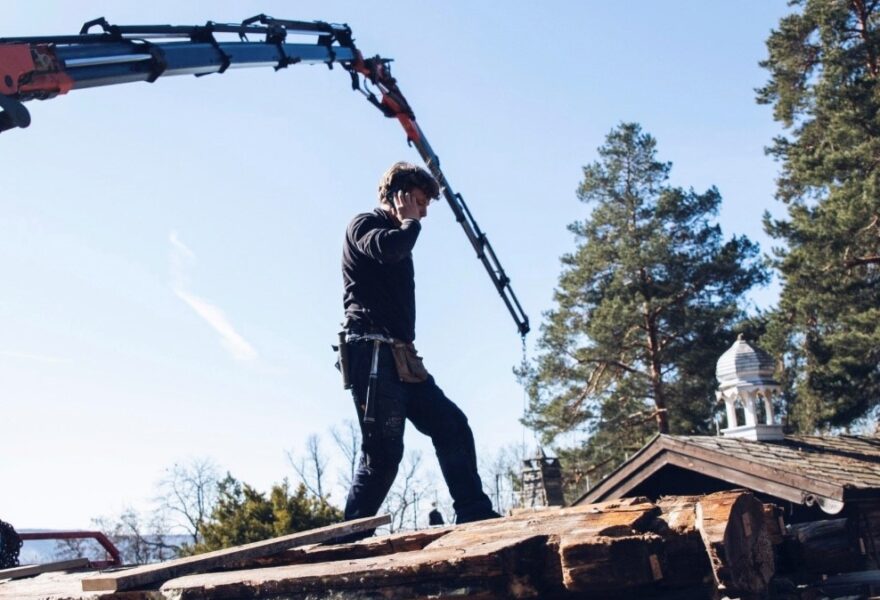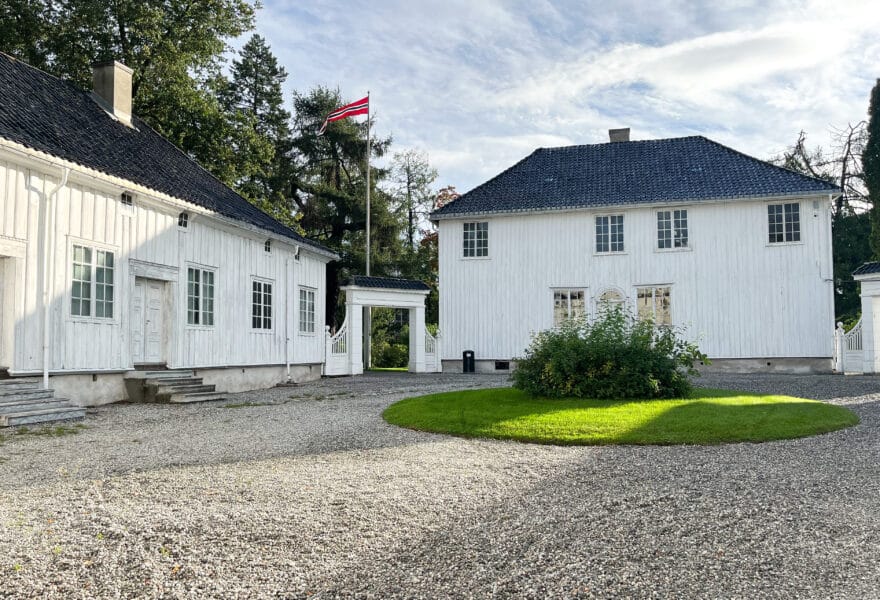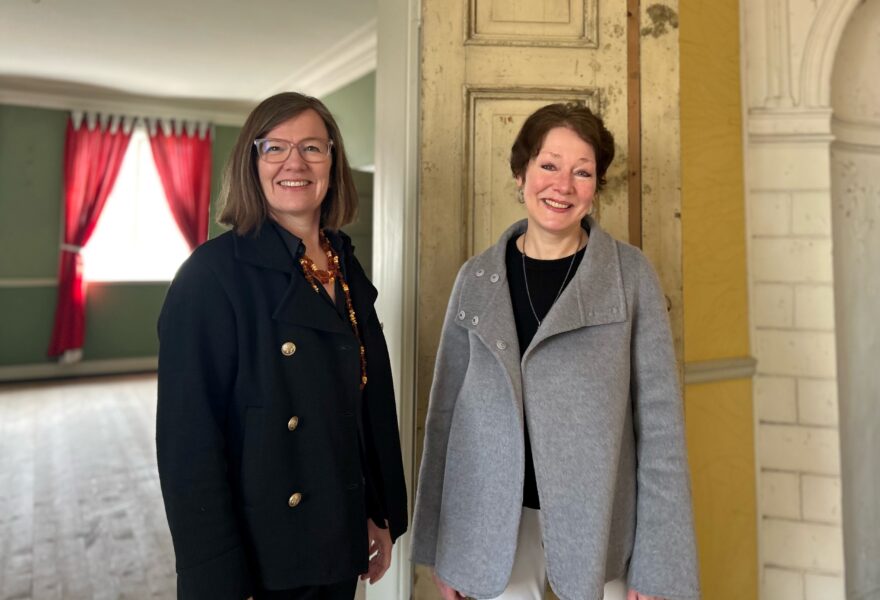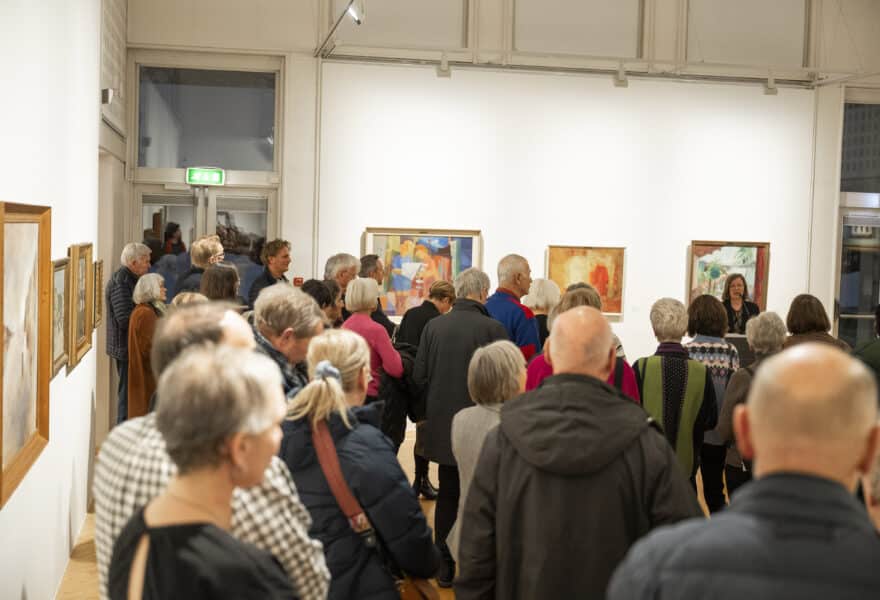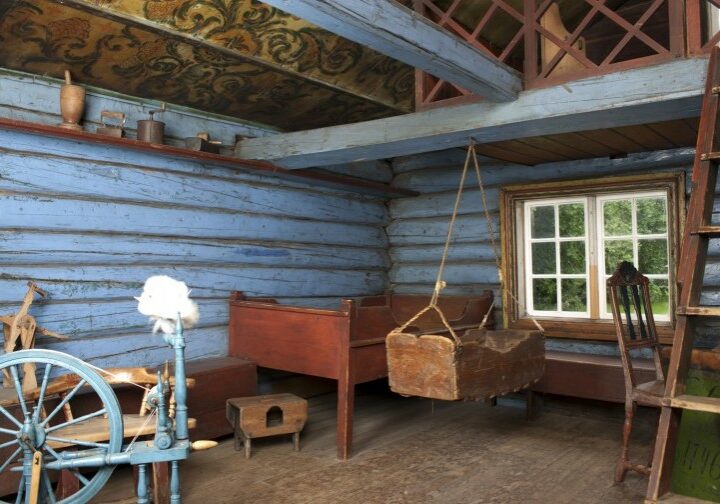
Rural art at a museum in the city
At Drammens Museum we have a fabulously beautiful collection of 18th and 19th century art and visual art culture from town and country. Highlights of this collection are displayed daily in the museum's main building at the exhibition Objects for Life.
Starting from church interiors and how the peasant community's household was an afterlife of the Last Supper, we can see lovely intarsia-decorated town furniture from Drammen and Dutch stoneware and East Indian porcelain, brought to the village and town across the harbour. We can see this side by side with rose-painted bowls, chests, cupboards, embroidered bunads and caraway-decorated mangle trees brought down from the villages of Numedal and Hallingdal.
We want to convey this material in the context of the buildings and grounds for which the rural culture's utility and art objects were created. Buildings and objects form the physical and symbolic framework around the traditional way of life in the countryside. From the summer of 2016, it will be possible to see a couple of the houses and guided tours will be held. The first question someone who visits Hallingtunet at Marienlyst will ask themselves is: Why is this rural yard located here? And the answer to the question is simple: For Hallingtunet, like open-air museums in other Norwegian cities (e.g. Folkemuseet in Oslo and Maihaugen in Lillehammer), it is the result of university and museum people's interest in the old Norwegian culture which, after modernization in the form of mechanization, efficiency and relocation, was in the process of being dissolved in the second half of the 19th century. The open-air museums in the city were thus part of a rescue operation, which was described as the buildings being in "reserve or asylum at the museum". And it had a lot to do with highlighting that Norway had its own proud cultural tradition independent of Sweden and Denmark.
What can Hallingtunet tell us about the building custom and way of life which, until the changes occurred in full force, is believed to have remained almost unchanged for hundreds of years? Hallingtunet is a concentrated reinterpretation of an open square yard, which is typical for Buskerud's valley driver. The yard is compacted, because the building was far more spread out in the village. The buildings do not come from the same farm either, but they show different functional types, such as living room, loft, cage, stable and sauna. The different building types and their floor plan and furnishings tell a lot about life on the farm. The decoration of the living room - the so-called household - has its own special structure that reflects authority relationships in the family on a daily basis and at guests' parties, which is believed to go all the way back to the Middle Ages. For example, how the high seat (only used by the master/host) at the end of the long table was placed diagonally opposite the fireplace. Torpostua - which will therefore be available in the summer season from 2016 - is richly decorated inside. The themes are taken from Bible history, natural history and cultural impulses from outside. Richly decorated living rooms are an expression of the farm's status in the village, but it also gives a good insight into the values and ideas that were considered important and governing life on the farm. The decoration shows that those who lived here saw their lives as part of a larger natural and spiritual whole.
We see in such a yard how different functions were kept separate. The need to dry grain, to preserve fodder and food through traditional preservation techniques and to keep cows separate from horses, etc. Much of this can be read straight out of the yard's organization. On the larger gardens in the village, grain was grown and grass was also produced in the area between the houses. The organization of the farm as an open square reflects the shape of the table and the room, and eventually the rectangular shape of the fields. This cannot be seen in a virtual village garden in the city, but the importance of distinguishing between the orderly life on the farm and the chaotic and dangerous outback, and keeping in with both underground and above-ground powers and gods, will be conveyed, among other things . by referring to archetypal patterns in embroidery. The basic value in farming society was fertility and the need for protection, and the material structures on the farm and the lushness and austerity of folk art express precisely this.
The traditional building practice in Norway developed over the centuries to become the art of construction. The combination of stave and laft had a heyday in the 18th century, although the techniques go back hundreds of years. At Hallingtunet we can see exquisite examples of such construction art and we can get to know different ways of counting the logs, different ways of shaping the rafter heads and otherwise see how horizontal and vertical building elements, light and heavy, open and closed, play together to form a artistic whole. - The Hallingtunet at Marienlyst is a rich source of knowledge and experience.
Åsmund Thorkildsen
Museum director
See also...
The pleasure garden at Marienlyst
The Marienlyst project – revitalization, anchoring and inclusion
Opening of Perspektiv Drammen - Artwork from the museum's collections
Perspective Drammen
Artwork from the museum's collections
22.02.24-04.08.24
Opening of the November exhibition 2023
22.11. opened Buskerud Visual artists and Drammens Museum November exhibition 2023. We welcome you to a great exhibition in the Lychepaviljon from 23.11.23 to 07.01.24
The November exhibition 2023
The November exhibition 2023 opens on Wednesday 22 November at 18:00

